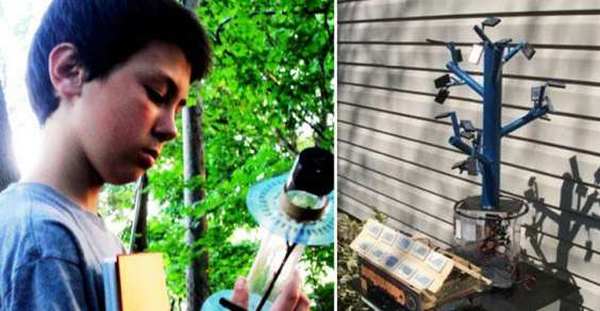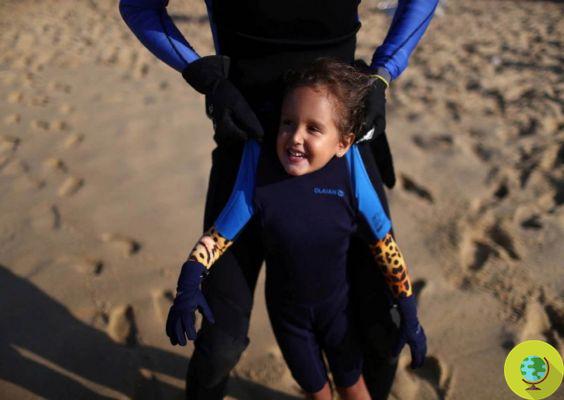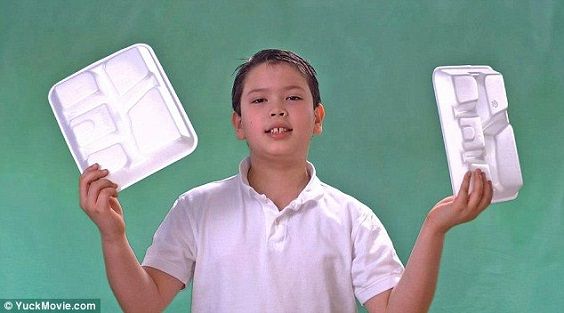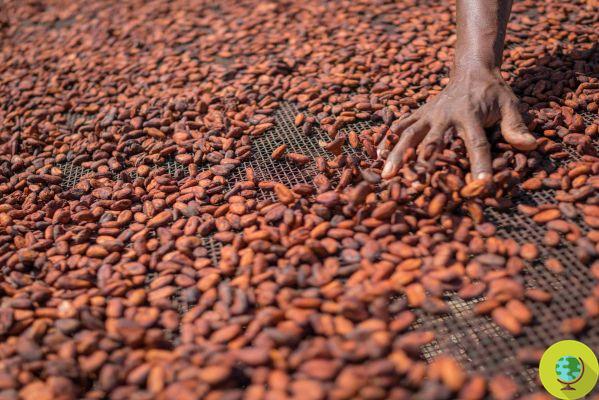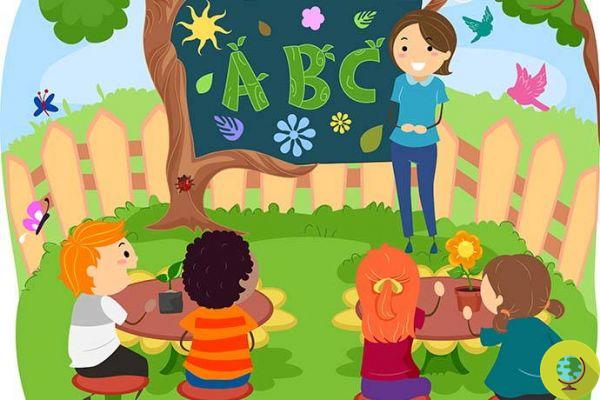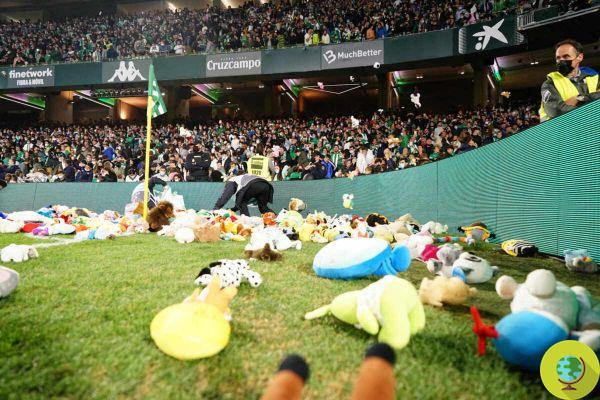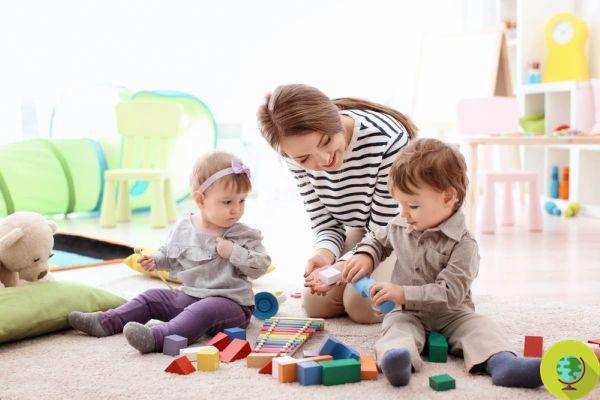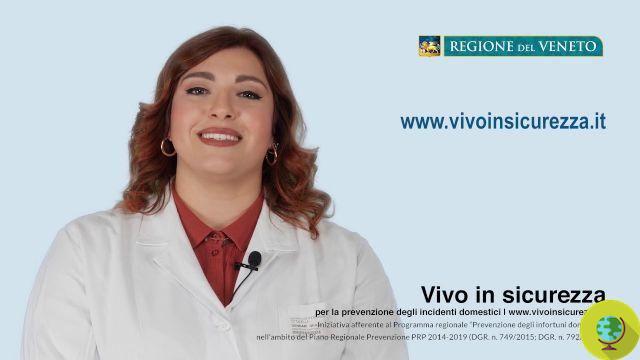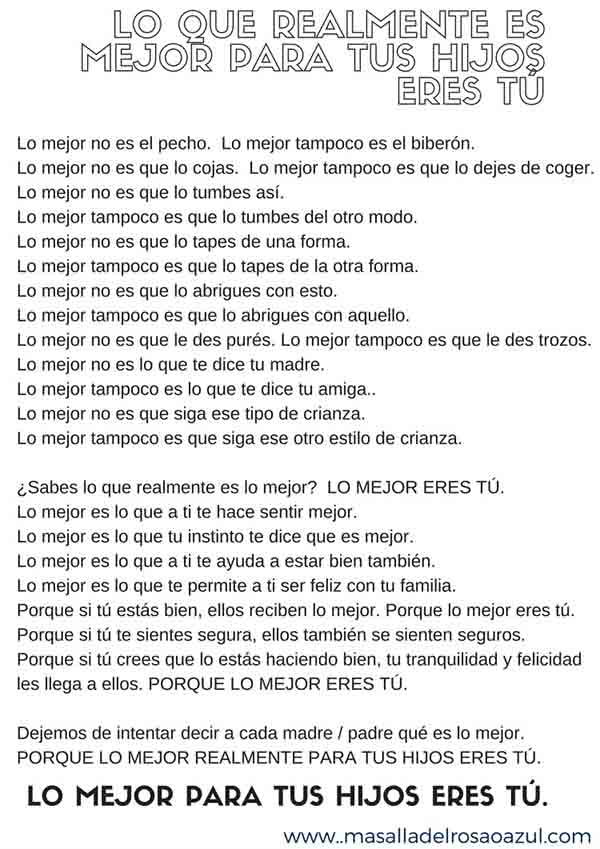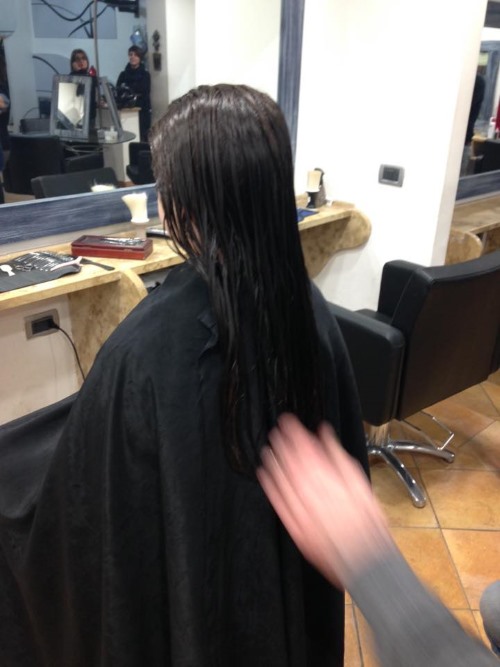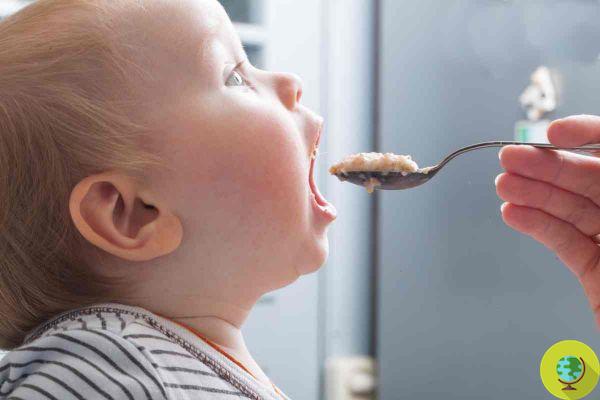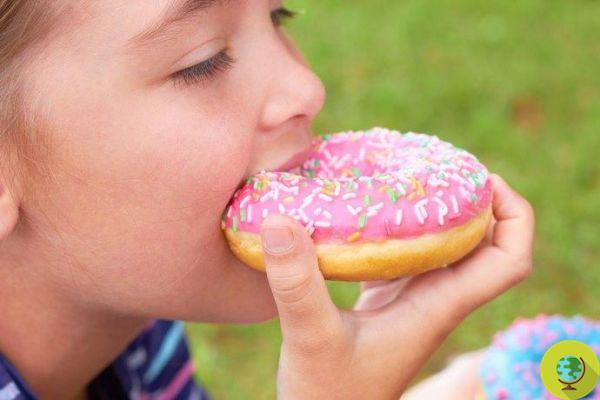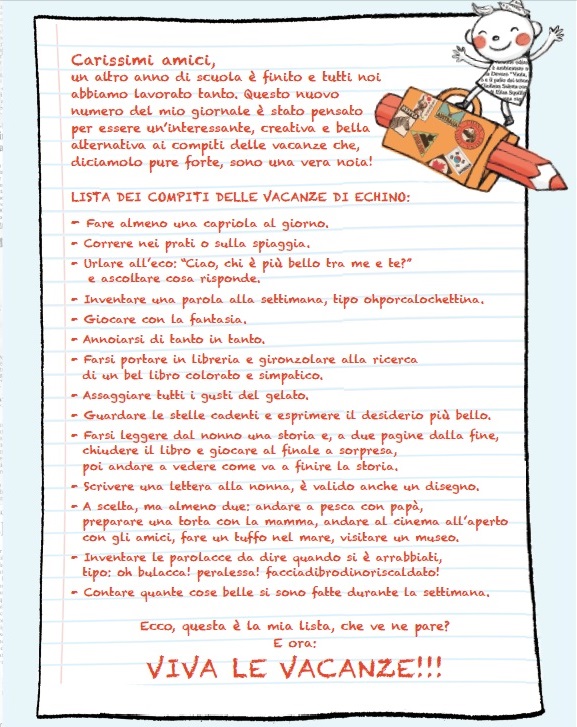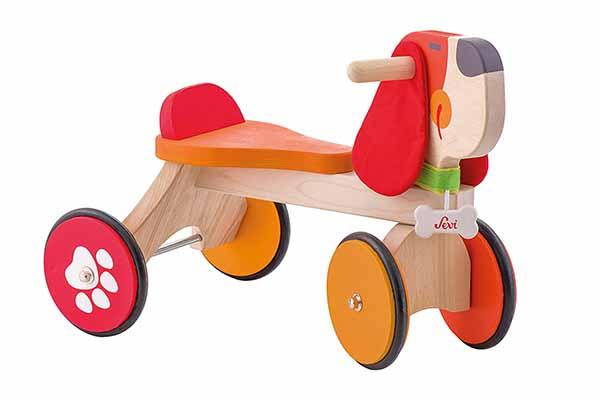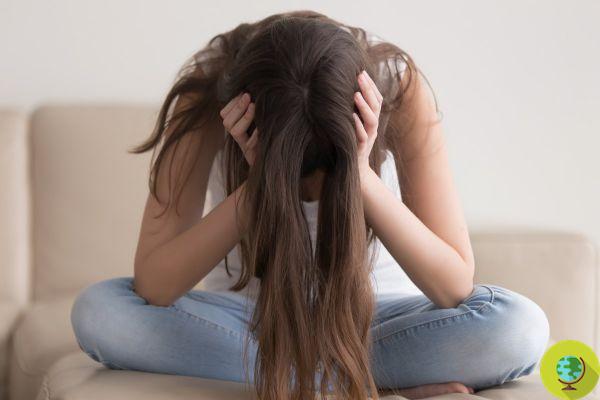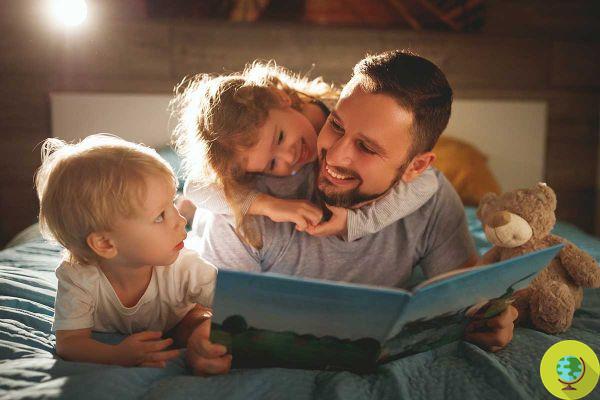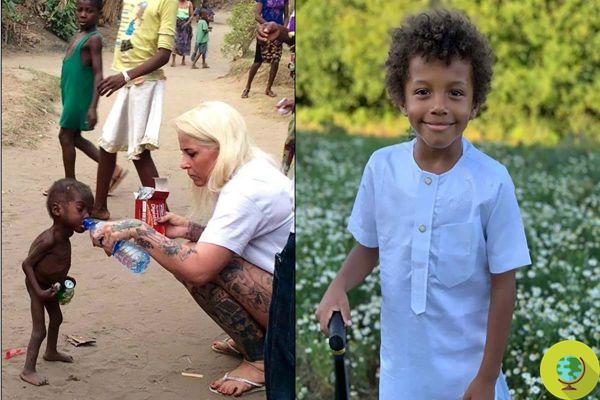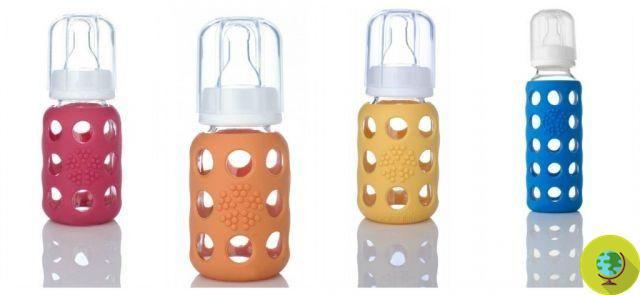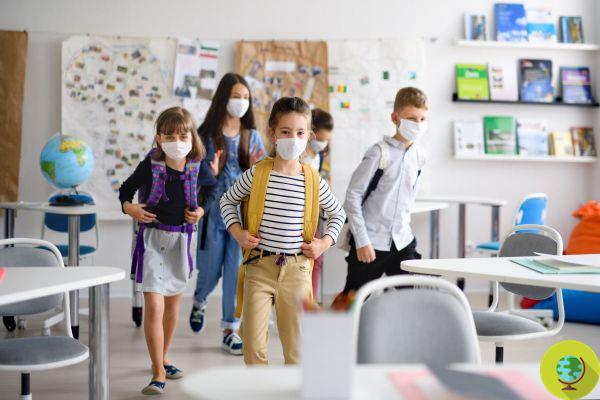Sleeping bags are very popular with parents who want their babies to rest in the warmth, preventing blankets and duvets from moving. But which ones to choose as they are safer and with less toxic residues? A German test reveals it to us.
Don't store avocado like this: it's dangerousI sleeping bags they are much appreciated by parents who want to let their children rest in the warmth, preventing blankets and duvets from moving. But which ones to choose as they are safer and with less toxic residues? A German test reveals it to us.
The test in question, conducted by the monthly Öko-Test, evaluated the safety of 13 sleeping bags considering not only the presence of pollutants in the fabrics with which they are made but also whether the neck and armholes were suitable for the specified size, if the little ones were at risk. to hurt himself with the zippers and if they discoloured in contact with sweat or if the child sucked a part of it. Finally, it was examined whether suppliers correctly attached instructions for use and warnings to their products.
These instruments, so comfortable for children, have been analyzed in the 70 cm size, roughly the one that is good from 7 to 11 months.
Most of the products analyzed were made of cotton with polyester filling. However, two wool sleeping bags were also included (of these the presence of pesticide residues was also evaluated).
The test results
Let's start by saying that, regardless of the price that fluctuated from about 8 to 85 euros, no sleeping bag was excellent and that only 4 have earned a "good". Luckily only one product turned out to be particularly polluted.
But now let's see specifically which brands have been analyzed:
- H&M
- Julius Zöllner
- Prolana
- Who
- lotties
- Odenwald
- Ikea
- Baby Walz
- Dm
- Reiff
- sterntaler
- C & A
- Alvi
Based on the results obtained, the 4 best products are the branded ones H&M, Julius Zöllner, Prolana e Ikea.
The worst instead it turned out to be the sleeping bag of Alvi Thermo Stars which tested positive at too high levels of antimony. The greatest risk is that this toxic substance will pass through the polyester of the sleeping bag fabrics until it reaches the baby. In addition, in the Alvi brand, there was an unnecessary optical brightener in the coating. This can detach from the fabric creating allergic reactions (in addition to the fact that it pollutes the environment).
In the following tables you can see all the results obtained by the various sleeping bags:
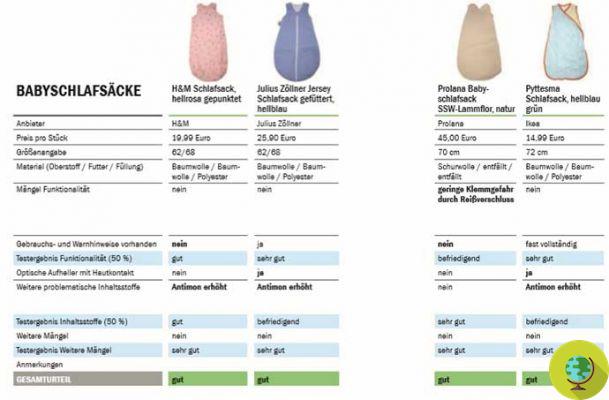
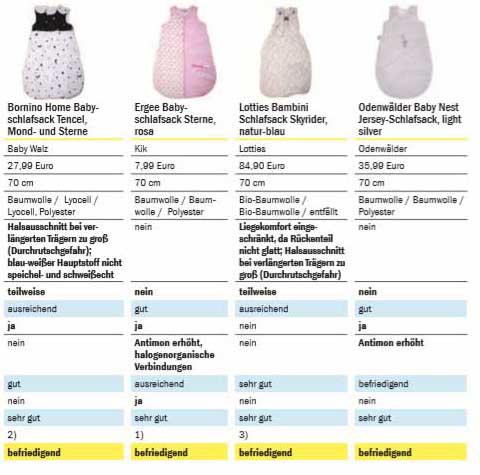
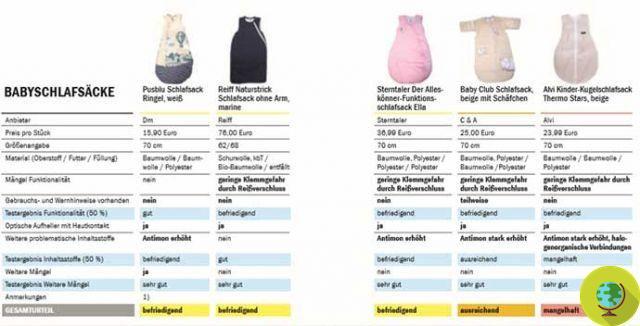
More generally, two products see the risk of the baby's head slipping into the sack while there is a small risk of being trapped in the zip fasteners of 5 of the products analyzed. In four of them, the zipper in the center of the neck closes from the bottom up and this entails the risk that the skin remains closed in the neck area.
Experts therefore recommend buying the sleeping bags that are distinguished by the green color in the table.
Read also:
- Dioxin and other toxic substances in diapers: the alarm (and analyzes) of the French agency
- Carcinogenic substances in pastels: the indicted brands (and those not)
- Rusks: Hipp and Holle worst in tests. Promoted Buitoni




